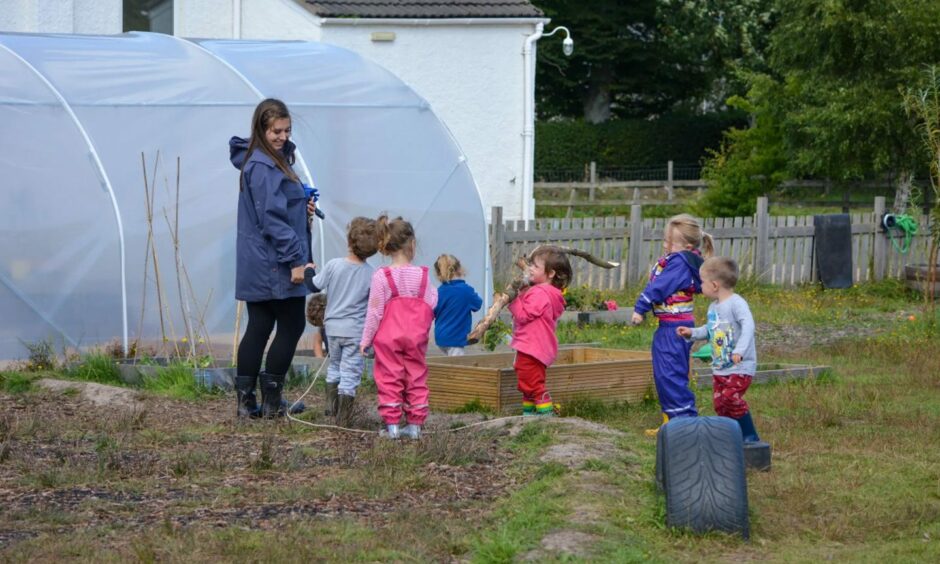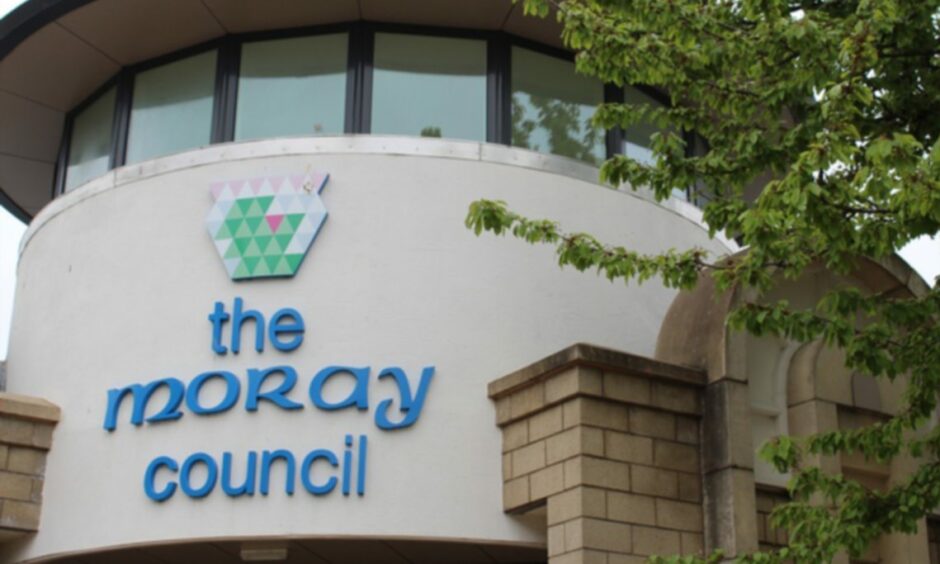Last week, 35 nurseries across Moray accused the council of breaking national policy for early years.
The campaign group say the council is withholding national funding to fill its own budget gap.
And they warn that without a rates rise, many independent nurseries will have to close their doors completely.
So what exactly is going on? Here’s our whistle-stop tour of nursery funding – and why this is an issue for more than just Moray.
How are nurseries funded?
Nurseries – or early learning and childcare centres (ELCs) as they’re more formally known – are paid by local government.
Council-run nurseries are directly funded by their local authority, with staff wages set in line with national pay negotiations.
However, councils can’t deliver early years services alone. So they work with independent partner providers to meet local needs.
These independent nurseries are paid an hourly rate, which varies from council to council.
The rate is meant to cover the cost of paying their staff the Real Living Wage – something that all nurseries must deliver, according to Scottish Government policy.
It should also be enough to cover their overheads, ensuring they’re sustainable.
It’s up to each council to set it nursery rates, based on what it can afford and what it costs to deliver ELC services.
This varies widely according to local needs and geography. For instance, it tends to cost more to deliver services in rural areas.
How much are nurseries paid?
This is where it all starts to unravel. The Fair Funding For Moray’s Children Action Group says Moray Council pays its own staff £14.36 per hour. The Real Living Wage is £10.90 per hour.
A job search for ELC jobs in Moray shows an early years practitioner vacancy with a salary range of £25,127 – £27,426 per year pro rata, advertised in August this year. In July this year, Moray Council was recruiting for a senior practitioner on £28,256 – £30,819 per year.
By contrast, the Moray action group says average wages in the independent sector is £9.90 per hour. This is below the Real Living Wage, but many providers do pay that wage or higher – others are working towards it, in line with national policy.
But while independent nurseries pay their staff around the £10 an hour mark, Moray Council only funds them £6.30 per hour.
This leaves a significant funding gap that nurseries say is not sustainable.
What do Moray nurseries want?
Simply, they want a rates increase. The action group has suggested it should be paid £7.43 per hour, and that this rate should be backdated to August 2022.
In a report for its education committee, Moray Council sets out that it currently has a three-year contract with independent nursery providers. This contract runs from August 2021 to the end of July 2024.
The contract stipulates that the council must pay a “sustainable rate per child, per hour”. This rate should take account of inflation and any increases in the Real Living Wage.
There’s some disagreement over language. The contract between Moray Council and independent nurseries says the rate should be “revised” annually, but the council report uses the term “reviewed”.
With the Real Living Wage up 10% and inflation now at 3.5%, nurseries say the rate should increase accordingly.
However, finance and education bosses for the council proposed a rates freeze.
Local nurseries said a freeze is the same as a real terms cut of 15%. They calculate this at £1,288 per child – or £1 million in losses to independent nurseries in the area.
They also argue that since most of the workforce is female, the rates shortfall increases the gender pay gap.
Yesterday, they took their argument to councillors and secured a 5% uplift. It’s less than they wanted, but a start at least.
What does the council say?
Moray Council says its ELC rates are among the highest in Scotland. In 2021, it delivered an 8% uplift in nursery rates, from £5.31 to £6.30 for 3-5 year olds, and from £6 to £7.57 for two-year olds.
It was one of the first local authorities to implement a rates rise, following an Ipsos Mori review which recommended a rate of £7.43.
In doing so, it became the third highest paying council in Scotland.
They say the Scottish Government cut their ELC grant from £10.432m in 2021/22 to £9.359m in 2022/23, so they can’t afford to pay more.
However, at the 11th hour the education committee did agree a 5% uplift, in line with the pay rise given to Moray Council ELC staff.
This takes Moray Council to the top of the table in ELC funding rates nationally.
What’s the national position?
The Scottish Government funds local authorities to deliver 1,140 hours per year of free childcare for all 3-5 year olds and eligible two-year-olds.
Each council receives a ring-fenced grant for delivering that policy, based on how much it will cost to deliver it.
The Scottish Government say its ELC policy is fully-funded, but councils say it falls short of what they need, and they’re left to make up the gap.
Campaigners have rubbished that claim, accusing the council of keeping the money for itself. They say Moray Council ELC staff are paid 30% more than independent providers. This means they often lose staff to better paid council jobs.
Now, they’re appealing to Cosla and the Scottish Government to step in. They say that councils should not be both banker and competitor.
It’s an argument that extends far beyond just Moray. Highland Council also recently bowed to political pressure and agreed a modest interim rates rise for independent nurseries.
What happens next?
Moray Council’s education committee yesterday voted unanimously for a 5% uplift in rates, to be backdated to April 2022.
However, as that decision has budget implications, it will need to be ratified at a meeting of the full council.
In the meantime, Moray campaigners say they’re grateful for the support – but they will keep fighting for more.
More from the Schools & Family team
Kinmylies pupil’s holiday spirit is helping fight loneliness this Christmas
Inverness councillor says families are waiting up to four years for ADHD diagnosis
GALLERY: Evening Express Christmas Concert performers impress P&J Live audience




Conversation